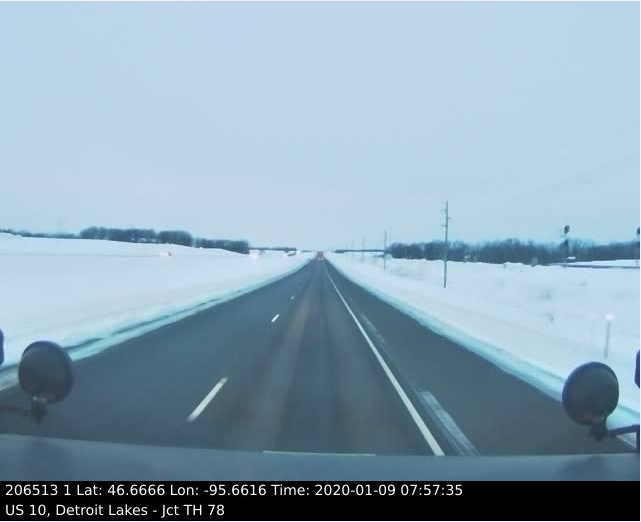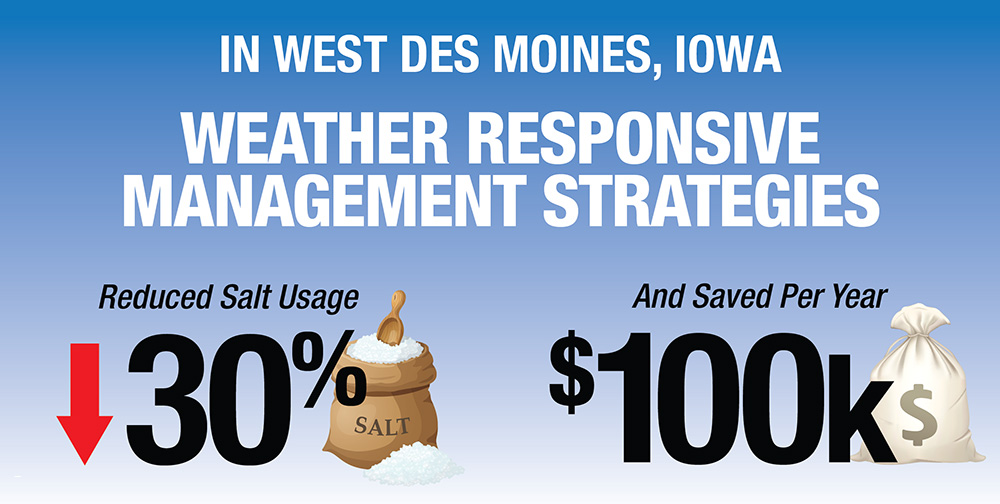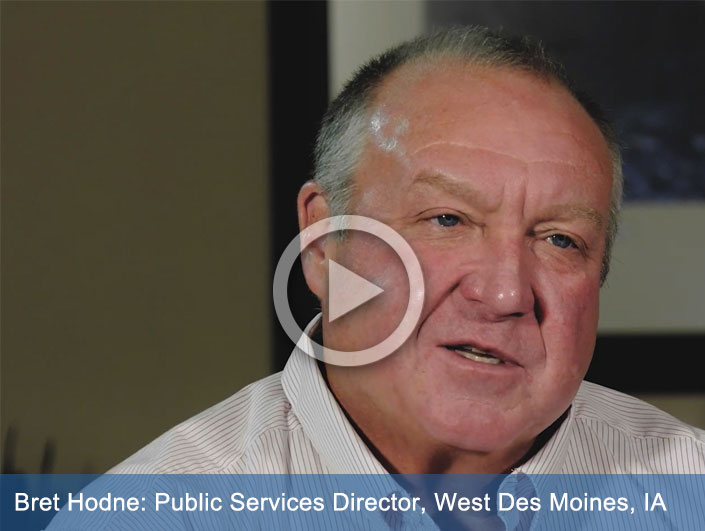January 30, 2020
Innovation of the Month:
Weather Responsive Management Strategies
Weather-responsive management strategies (WRMS) can help agencies affected by snow, ice, and other winter weather conditions to improve their road maintenance activities. Over 16 State transportation agencies currently use automated processes like maintenance decision support systems (MDSS) to support winter maintenance and operations. These systems use available road and weather condition information to make recommendations about the location, timing, and type of material for maintenance staff to apply. Many agencies also use data from fleet vehicles, such as snow plows, for traveler information applications that sometimes include a weather layer with plow tracking and/or plow images.

The Minnesota Department of Transportation (MnDOT) uses WebMDSS, a web-based application, to manage its roadways and resources during inclement weather. The application provides road advisories, warnings, and treatment information and recommendations for road maintenance, and serves as the primary resource for forecasting. The tool allows MnDOT staff to make more informed decisions for maintenance planning and tactical actions through detailed, hour-by-hour, weather and pavement forecasts at the maintenance route level. These informed decisions result in improved mobility and safety, as well as cost savings and reduced environmental impacts from reduced material usage. For example, reports on speed while applying chemicals, average precipitation, material usage by route, and sander status support MnDOT’s efforts to track material usage in a more efficient manner.
Using existing mobile observation capabilities, MnDOT provides the public with information to make informed travel decisions. In addition to weather condition information in the agency’s 511 traveler information system, MnDOT provides road condition images taken from active plows in the field. This provides additional information on current and anticipated roadway dangers and conditions. Traffic operators can also use these images to create messages to post on dynamic message signs where needed, keeping motorists informed with real-time information.
To learn more about how WRMS can help your agency provide better response to winter weather events, contact David Johnson with the FHWA Office of Operations.
EDC Outtakes – Weather Responsive Management Strategies
In the latest edition of EDC Outtakes, Bret Hodne, Public Services Director for West Des Moines, IA, discusses how his agency used WRMS to reduce salt-usage by 30% and provide a tremendous return on investment for the city.
Keep reading EDC News for future editions of EDC Outtakes- a series of short videos that gives insight into the current round of EDC innovations from State practitioners and FHWA personnel.

Save Lives: Train Your Staff on FoRRRwD and STEP Countermeasures
The statistics are staggering. Nearly 12,000 people are killed each year as a result of a roadway departure on a rural road. Pedestrians killed on roadways are increasing – nearly 6,300 in 2018. To raise awareness of this critical issue, FHWA is training staff in Local Technical Assistance Programs (LTAPs) across the country on effective deployment of countermeasures promoted in two Every Day Counts initiatives - Focus on Reducing Rural Roadway Departures (FoRRRwD) and Safe Transportation for Every Pedestrian (STEP) countermeasures.
Contact the LTAP Center to learn about training opportunities that are available in your State. For technical assistance on specific countermeasures, contact Becky Crowe, or Peter Eun, team leads for STEP or Cate Satterfield or Dick Albin, team leads for FoRRRwD.
About EDC
Every Day Counts, a State-based program of the Federal Highway Administration’s Center for Accelerating Innovation, works with State, local, and private sector partners to encourage the adoption of proven technologies and innovations to shorten and enhance project delivery.



